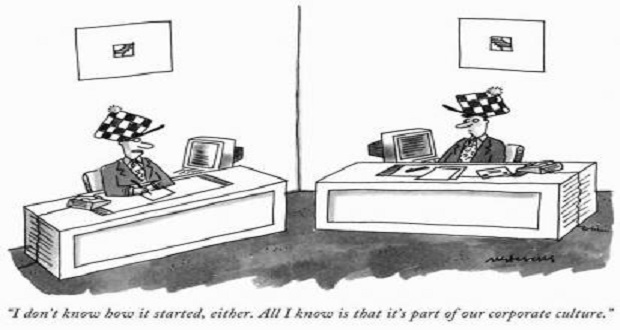 The second post in this series focused on how to get leadership engagement, highlighting key distinctions between commitment and engagement. Last week we shared the top-down bottom-up nature of developing a sustainable strategy.
The second post in this series focused on how to get leadership engagement, highlighting key distinctions between commitment and engagement. Last week we shared the top-down bottom-up nature of developing a sustainable strategy.
This week’s feature will provide insights on the importance of an executive level diversity and inclusion council.
The Problem with Non-Executive Level Diversity Councils
Over the years The Winters Group has been retained by a number of organizations after they had established a diversity council. In most cases these councils were comprised of a cross-section of volunteers from various levels throughout the organization. If not volunteers, individuals were likely selected because they represented a particular diversity dimension. Organizations were careful to ensure that the major groups served on the council…African Americans, Latinos, women, people with disabilities, LGBT, etc.
The typical charge to these councils is to provide recommendations to senior leaders about how to improve inclusion in the organization. The key problem with councils comprised of non-executive level employees is they have little power to effect change and often become frustrated when they do not see their ideas being implemented. In many cases, the council will run out of things to do. We have been called in to help councils at the 1 to 2 year mark where they are asking, what do we do now? The council has likely spent several months determining their role and purpose; another few months developing a strategy and then figuring out how to get their ideas implemented. In many cases, the council members are not even allowed to review demographic data that would help them understand the key areas needing improvement.
Executive Level Councils are Critical to D&I Success
If an organization is serious about diversity and inclusion, senior leaders will assume responsibility and accountability for diversity and inclusion. In 2005, 42% of DiversityInc top 50 companies had executive level diversity councils. By 2010, all 50 reported have such councils.
Executive level councils are more likely to make progress towards diversity and inclusion goals for the following reasons:
- They have the power to effect change.
- Typically a part of their experience is training and education enabling them to more competently execute on diversity and inclusion.
- Executive Council members usually have major operational responsibility. They can spearhead the implementation of diversity and inclusion strategies within their respective organizations.
- The establishment of an executive council sends a message to all employees that the organization is serious about diversity and inclusion.
Executive level councils are usually chaired by the CEO and comprised of his/her direct reports. Often the Chief Diversity Officer will provide staff support to the council.
Below is a sample purpose statement for an executive diversity council:
Our commitment to diversity begins at the top. (Company name) Executive Diversity Council consists of executives and other individuals representing each business unit. The council’s duties and responsibilities are to:
- Define (Company name’s) diversity strategy by setting long and short-range objectives for workforce diversity, supplier diversity, corporate philanthropy, and community involvement;
- Assign priority to and monitor corporate performance against the set objectives;
- Monitor corporate performance against marketplace benchmarks and best practices;
- Establish and review Company-wide Diversity Programs, policies, and initiatives.
Establishing Both Executive and Operational Councils
Some organizations will establish divisional diversity councils that report into the executive level council. This model works well because the operational councils have a reporting structure that alleviates the issue of their lack of power to actually effect change. The model below is an example of an integrated governance model.



















